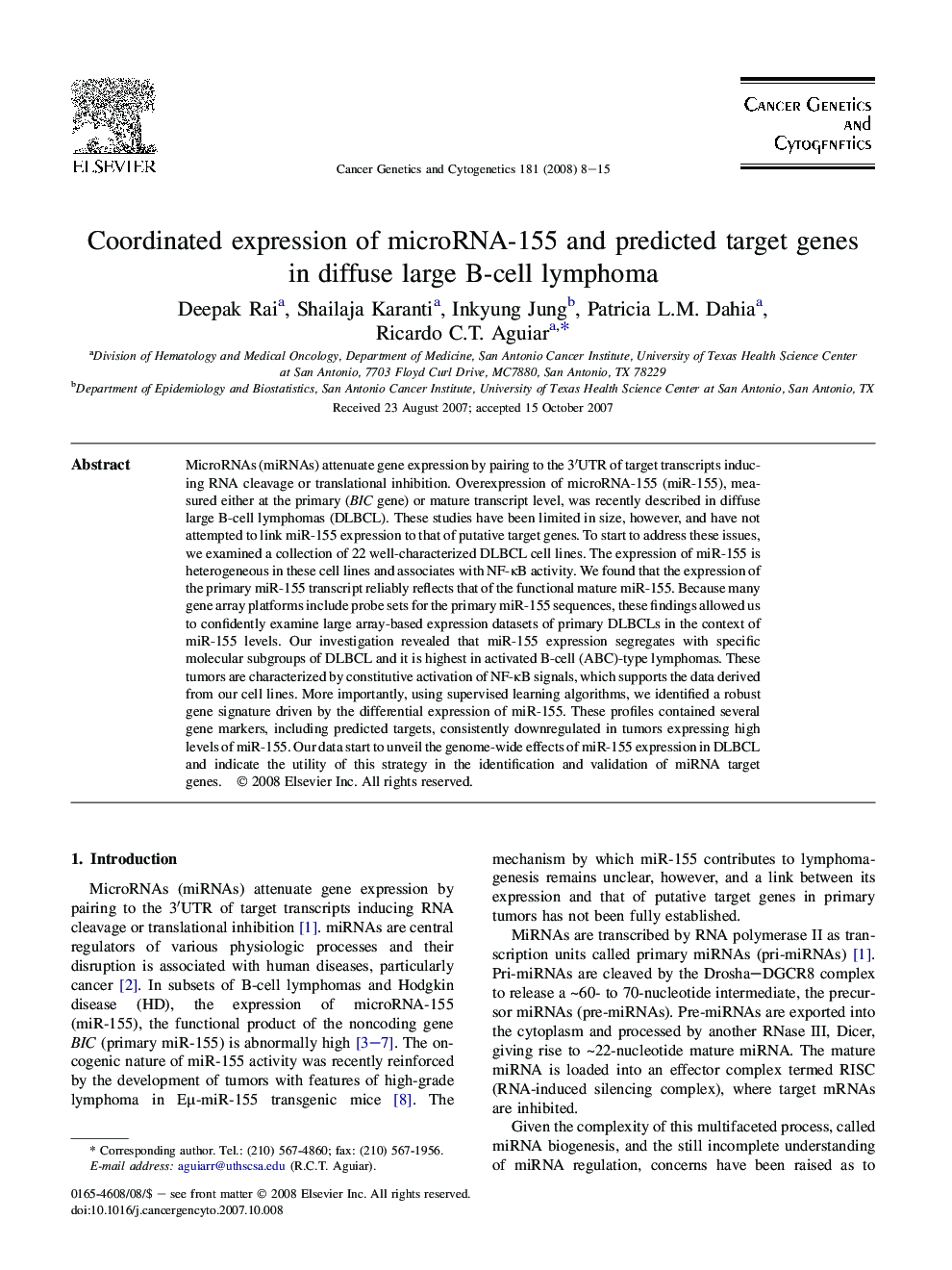| Article ID | Journal | Published Year | Pages | File Type |
|---|---|---|---|---|
| 2111417 | Cancer Genetics and Cytogenetics | 2008 | 8 Pages |
MicroRNAs (miRNAs) attenuate gene expression by pairing to the 3′UTR of target transcripts inducing RNA cleavage or translational inhibition. Overexpression of microRNA-155 (miR-155), measured either at the primary (BIC gene) or mature transcript level, was recently described in diffuse large B-cell lymphomas (DLBCL). These studies have been limited in size, however, and have not attempted to link miR-155 expression to that of putative target genes. To start to address these issues, we examined a collection of 22 well-characterized DLBCL cell lines. The expression of miR-155 is heterogeneous in these cell lines and associates with NF-κB activity. We found that the expression of the primary miR-155 transcript reliably reflects that of the functional mature miR-155. Because many gene array platforms include probe sets for the primary miR-155 sequences, these findings allowed us to confidently examine large array-based expression datasets of primary DLBCLs in the context of miR-155 levels. Our investigation revealed that miR-155 expression segregates with specific molecular subgroups of DLBCL and it is highest in activated B-cell (ABC)-type lymphomas. These tumors are characterized by constitutive activation of NF-κB signals, which supports the data derived from our cell lines. More importantly, using supervised learning algorithms, we identified a robust gene signature driven by the differential expression of miR-155. These profiles contained several gene markers, including predicted targets, consistently downregulated in tumors expressing high levels of miR-155. Our data start to unveil the genome-wide effects of miR-155 expression in DLBCL and indicate the utility of this strategy in the identification and validation of miRNA target genes.
